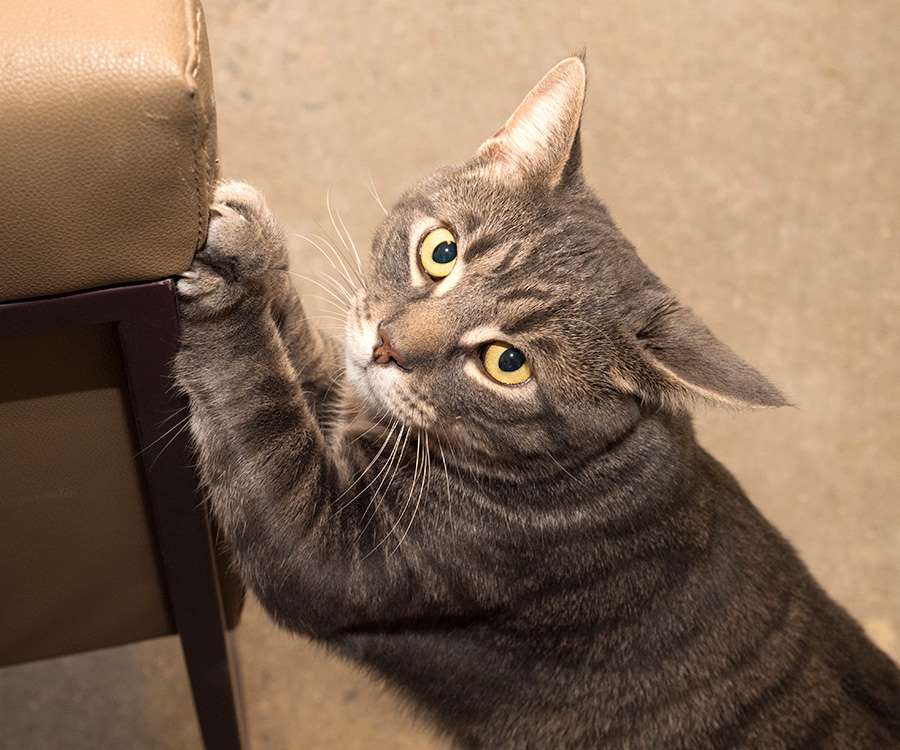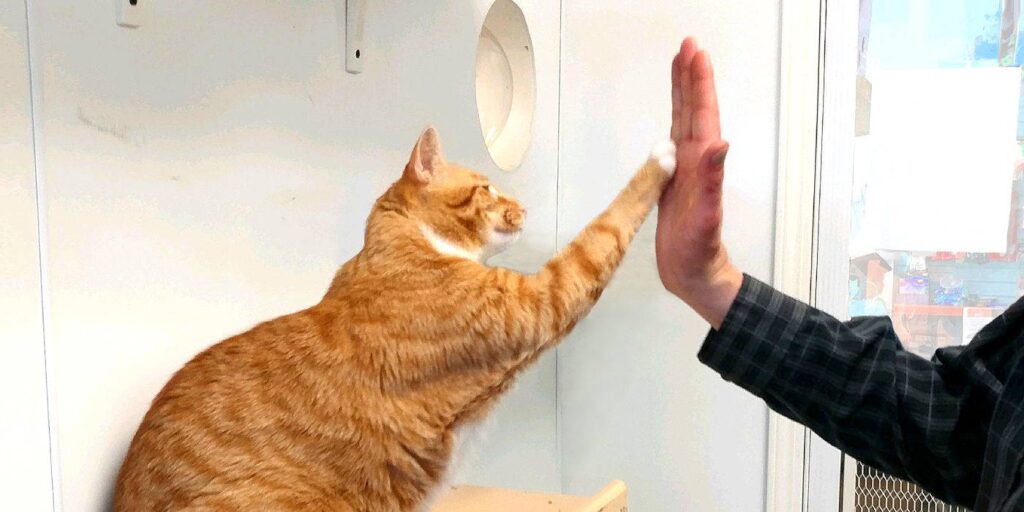How to Teach Your Cat Not to do Something

As a cat owner, you may find yourself struggling with some unwanted behaviors from your furry friend. Whether it’s scratching furniture, jumping on countertops, or biting. It’s important to understand why cats misbehave and how you can teach your cat not to do something.
With patience, consistency, and positive reinforcement, you can help your cat change their behavior and become a well-behaved member of the household.
Cat Misbehavior

There are many reasons why a cat may misbehave. It is important to understand the reason for its misbehavior before you begin to correct it. Finding the underlying problem can be a great way to ensure that the problem does not surface again in the future.
There can be multiple reasons why your cat may be misbehaving. This can include boredom, stress, or a lack of stimulation. For example, if your cat is scratching furniture because they are bored, providing them with more toys and playtime can help alleviate the problem.
Oftentimes, what appears to be misbehavior in your cat is simply their way of exhibiting their natural instincts as animals. It is not productive to punish them for their natural tendencies. Instead, it’s better to help them adapt and offer them safer alternatives.
However, sometimes, cats may develop problematic behaviors without apparent cause. There may also be instances where your own actions may have contributed to the behavior and you did not intervene early enough.
It is important to approach correcting the behavior with caution and patience, regardless of the cause. It is not easy to teach your cat not to do something but can be rewarding once it is taught. Keep in mind, a great deal of patience is required for success.
Training Your Cat

Here are some of the many ways you can teach your cat not to do something, you don’t want it to:
Provide Positive Reinforcement:
Positive reinforcement is a powerful tool in training your cat not to do something. When your cat shows good behavior, reward them with treats, praise, or extra attention. This will encourage your cat to continue the behavior, and they will associate the good behavior with a positive experience. For example, if your cat is scratching the scratching post instead of the furniture, give them a treat and praise them. This will help them understand that scratching the post is a desirable behavior.
Redirect Their Behavior:
Another effective way to train your cat is to redirect its behavior. When you see your cat about to engage in unwanted behavior, such as jumping on the countertop, redirect their attention to a toy or another activity. This will help them associate the unwanted behavior with a lack of reward and encourage them to engage in desirable behavior instead.
Deterrents:
In addition to redirecting behavior, deterrents can also be used to discourage unwanted behavior. For example, if your cat is scratching the furniture, you can use double-sided tape or aluminum foil to make the area unappealing to your cat. The idea is to make the behavior less desirable, so your cat will be less likely to engage in it.
Consistency:
Consistency is key when training your cat not to do something. It is important to reinforce good behavior consistently, and always use the same techniques to discourage unwanted behavior. This will help your cat understand what you expect from them and what behaviors are desirable.
Be Patient:
Finally, it is important to be patient when training your cat. Training your cat not to do something takes time, patience, and repetition. Don’t expect immediate results, and be patient as your cat learns what you expect of them. Consistent training will yield results, but it is essential to remember that every cat is unique and may require different methods of training.
Disciplining Your Cat: What Not to Do

There are certain things you should avoid when trying to discipline your cat. Not being careful about these can have an adverse effect on your relationship with your cat:
1. Physical Force is Not the Answer
It is never advisable to physically harm your cat when trying to discipline them. This will only create trust issues and make the situation worse.
2. Timing is Key
In order to effectively discipline your cat, prompt punishment is necessary. Unlike humans, cats cannot remember their misbehavior, so it is important to reprimand them immediately after they have done something wrong.
3. Consistency is Key
In order for discipline to be effective, it must be consistent. Cats cannot understand verbal commands, so associations must be made in order to correct their behavior. Allowing your cat to continue misbehaving one day and punishing them the next will only confuse them.
4. Ignoring the Problem is not the Solution
It may be tempting to ignore misbehavior in the hopes that it will go away on its own, but this approach will only make the problem harder to control in the long run. Timely intervention is key to effectively teaching your cat not to do something.
Disciplining a cat requires patience, consistency, and an understanding of feline behavior. By avoiding physical punishments, giving prompt consequences, maintaining consistency, and addressing bad behavior promptly, you can effectively teach your cat not to do something.
Remember that every cat is unique, and what works for one may not work for another, so be willing to adjust your approach if necessary. With time and persistence, you can help your feline friend become a well-behaved member of the household.


